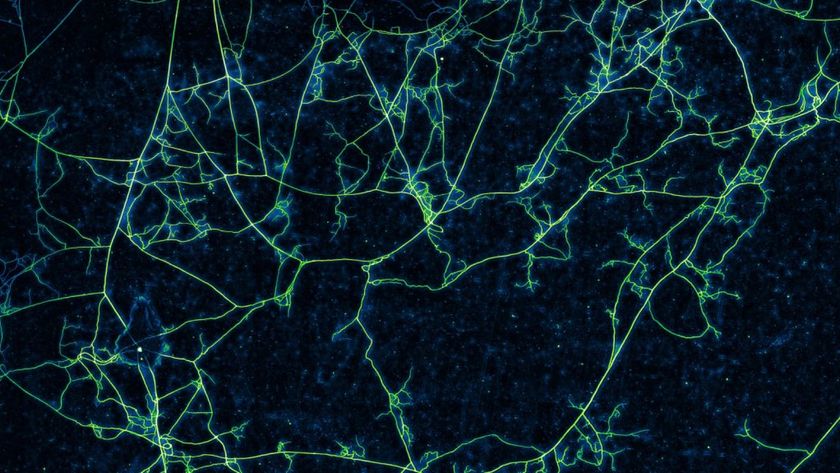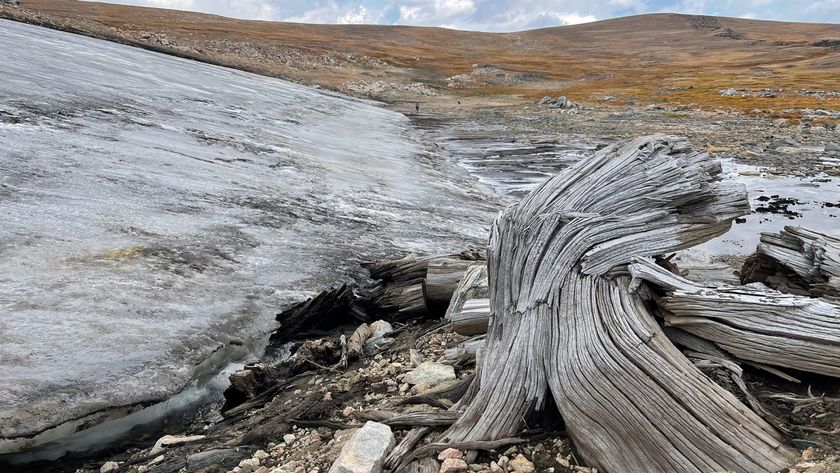The normally barren, almost Martian landscape of the Atacama Desert recently erupted in flowers, painting the hillsides, blue, fuschia, orange and yellow. The almost magical transformation occurred thanks to heavy rains earlier in the year, which watered flower seeds that had lain dormant for years. One Twitter user, Tomás Cuadra Ordenes, captured photos of the gorgeous blooms. [Read the full story on the Atacama Desert blooms]
Fields of pink
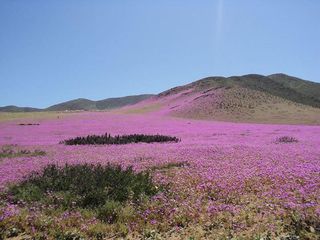
Earlier in the year, the Atacama Desert received heavy rains, with the town of Antofagasta, Chile receiving seven years' worth of rain in a 12-hour span. Those heavy rains turned the parched desert into rivers of mud. But the same rainfall watered seeds that had been buried in the ground for years, waiting for their chance to bloom. Here, photos of the blooms painting the landscape. (Photo credit: Tomás Cuadra Ordenes)
Rare species
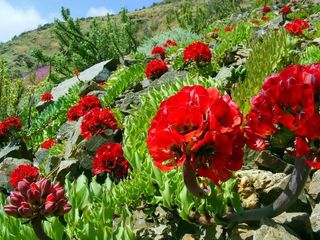
About 200 plant species popped up thanks to the rain. Some, like the Garra de León, are found nowhere else in the world. (Photo credit: Tomás Cuadra Ordenes)
Blue and white
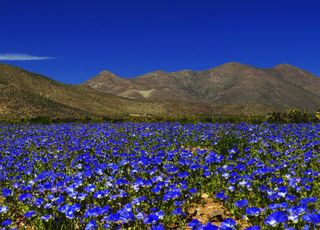
Here, gorgeous blue and white flowers dot the landscape of the Atacama Desert. These flowers pop up overnight. (Photo credit: Tomás Cuadra Ordenes)
Sign up for the Live Science daily newsletter now
Get the world’s most fascinating discoveries delivered straight to your inbox.
Desert blooms
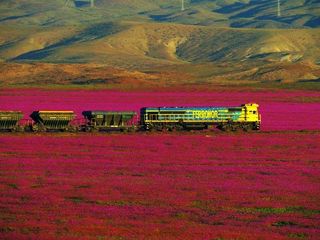
The Atacama Desert is one of the driest places on Earth, and such blooms typically only happen every five to 10 years, but this bloom is one of the most impressive in decades, experts say. Getting to experience the blooms, like the train conductor traveling across this field of fuschia, is a once in a lifetime experience. (Photo credit: Tomás Cuadra Ordenes)
Lifetime trip
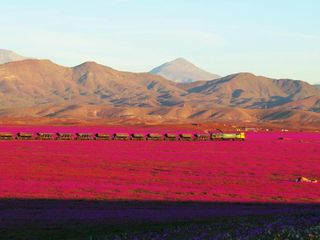
This cargo train has quite the view as it travels through endless fields of magenta flowers. (Photo credit: Tomás Cuadra Ordenes)
Standing watch
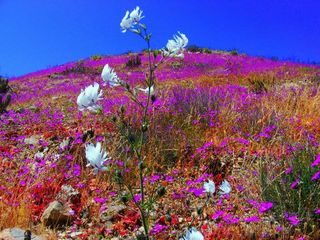
This giant white cockatoo stands watch over his field of pink lilies. (Photo credit: Tomás Cuadra Ordenes)
Fleeting beauty
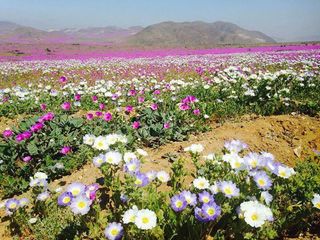
Though flowers seem to cover every surface now, they will soon wither away and the landscape will once again be transformed to its drab palette of rust browns and greys. By the end of November, all trace of the colorful blooms will be gone. (Photo credit: Tomás Cuadra Ordenes)
Desert palette
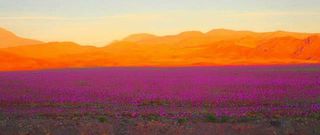
The desert sunset enhances the view of the flowers, painting the sky and mountains behind in a palette of yellow and red. ((Photo credit: Tomás Cuadra Ordenes)
Follow Tia Ghose on Twitter and Google+. Follow Live Science @livescience, Facebook & Google+.

Tia is the managing editor and was previously a senior writer for Live Science. Her work has appeared in Scientific American, Wired.com and other outlets. She holds a master's degree in bioengineering from the University of Washington, a graduate certificate in science writing from UC Santa Cruz and a bachelor's degree in mechanical engineering from the University of Texas at Austin. Tia was part of a team at the Milwaukee Journal Sentinel that published the Empty Cradles series on preterm births, which won multiple awards, including the 2012 Casey Medal for Meritorious Journalism.
